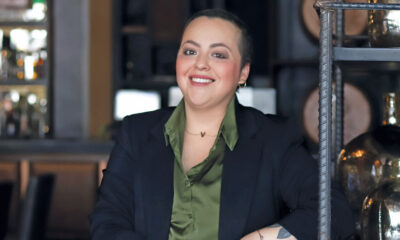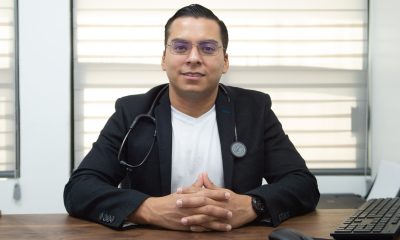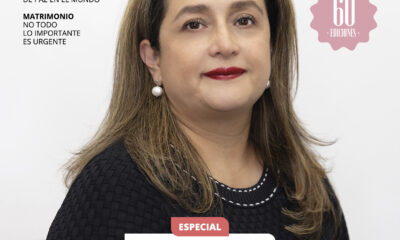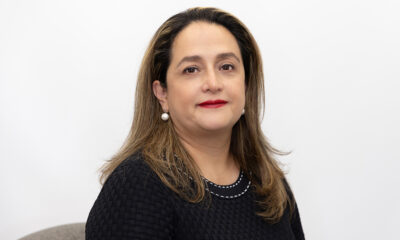Salud
¡No todo es cáncer!
Publicado
4 años antesel

Pese a casi entrar en el año 2021 existen muchas mujeres que no conocen la infinidad de enfermedades que pueden afectar sus senos, mismas que no necesariamente pueden desencadenar un cáncer.
Para conocer de dichas enfermedades, Visionarias platicó con el doctor Genaro Tamayo Pérez, especialista en patología de las glándulas mamarias y director de la Clínica de Patología Mamaria SenX, quien nos ayuda a comprender la estructura de esta parte del cuerpo, así como los tipos de padecimientos que pueden afectarla.
Sobre las mamas, el especialista nos explica que estas tienen una “estructura extraordinaria”, lo que no impide que lleguen a sufrir diferentes tipos de enfermedades, las cuales se pueden dividir en congénitas, es decir desde el nacimiento, como por ejemplo cuando las mujeres nacen sin la estructura o sólo con una parte de esta.
También están las enfermedades que llegan a aparecer durante el desarrollo (como la falta de desarrollo, que se desarrollen mucho o que una mama crezca más que la otra). Además, existe la posibilidad de la presencia de tejido mamario fuera del lugar habitual (para los humanos), así como lesiones benignas, las cuales, según explica el doctor Tamayo son más que las malignas.
El médico agrega que cada tipo de enfermedad o lesión tiene variables que generan comportamientos diferentes en las mujeres, lo cual dependerá de su estado de salud, edad, genética y otros detalles que se deben evaluar para determinar que tanto el padecimiento afectará a la mujer o que tratamiento es el que se debe de seguir en cada una de ellas.
¿Cuándo sí preocuparnos?
Cuando la lesión es maligna es importante que se detecte a tiempo, ya que esto permitirá una mejor atención y se asegurará el bienestar de la paciente.
Las lesiones malignas se dividen en linfoma, sarcoma y el carcinoma; de este último hay dos variedades, el In-situ y el invasor, donde el invasor tiene más de 27 tipos, entre ellos el ductal, el cual es el más común.
“En la actualidad las mujeres se sienten algo, o les duele algo o les dicen que tal vez hay algo y automáticamente lo asocian con el cáncer y con la muerte, lo cual es totalmente falso, si bien algunas de ellas pueden fallecer por la enfermedad, esto está dado más por la etapa (tardía) en la cual se detectó el padecimiento, algunas características de la lesión y la presencia de otras comorbilidades”, menciona el doctor Tamayo.
Por lo anterior, es importante la detección temprana de las lesiones mamarias, para evitar que se llegue a un cáncer avanzado.
No todo es verdad en Internet
El especialista señala que buscar los padecimientos en Internet resulta confuso para las mujeres, ya que es un lugar donde no toda la información es verídica y frecuentemente es contradictoria, incorrecta o imprecisa, y aunque en algunos casos sea correcta, el manejo siempre se debe individualizar, pues cada persona es diferente, desde su genética hasta sus hábitos y esto puede variar el tratamiento.
¿Cómo prevenirlo?
“El grupo más grande de sobrevivientes de cáncer en el mundo es el de sobrevivientes de cáncer de mama”, confirma Tamayo, quien comparte que una de las campañas más constantes en el tema es la de la autoexploración, acción que no muchas mujeres realizan, pues no es un hábito en ellas.
Ante esto el especialista señaló que la mejor manera de enseñar la práctica de la autoexploración es inculcarlo desde niñas y hace énfasis en que las pequeñas lo aprenden casi jugando, por lo que deben saber cómo hacerlo correctamente, es decir con las yemas de los dedos en forma circular y con el brazo detrás de la cabeza, ya que de esta forma cualquier “bolita” será fácil de detectar.
“Si desde niñas se les fomenta el hábito de la autoexploración y se les enseña a que no todo es cáncer, esto ayudará a que ellas vean la autoexploración como algo normal y no les va a dar miedo de ir al médico, con esta pequeña enseñanza podremos bajar aún más la tasa de mortalidad por el cáncer de mama”.
Y ya arriba de 40 años perder el miedo a realizarse el estudio de la mamografía que sigue siendo el método más aceptado de vigilancia y detección temprana.
En conclusión, se puede decir que hablar de cáncer de mama no está mal, pero es necesario hacerlo con conciencia y proactivamente, generando un análisis racional, ya que la gran mayoría de las lesiones no son cáncer y la confianza de que aun si es un cáncer es una enfermedad se puede superar. Así que a cuidarnos y recordar que: No todo es cáncer.
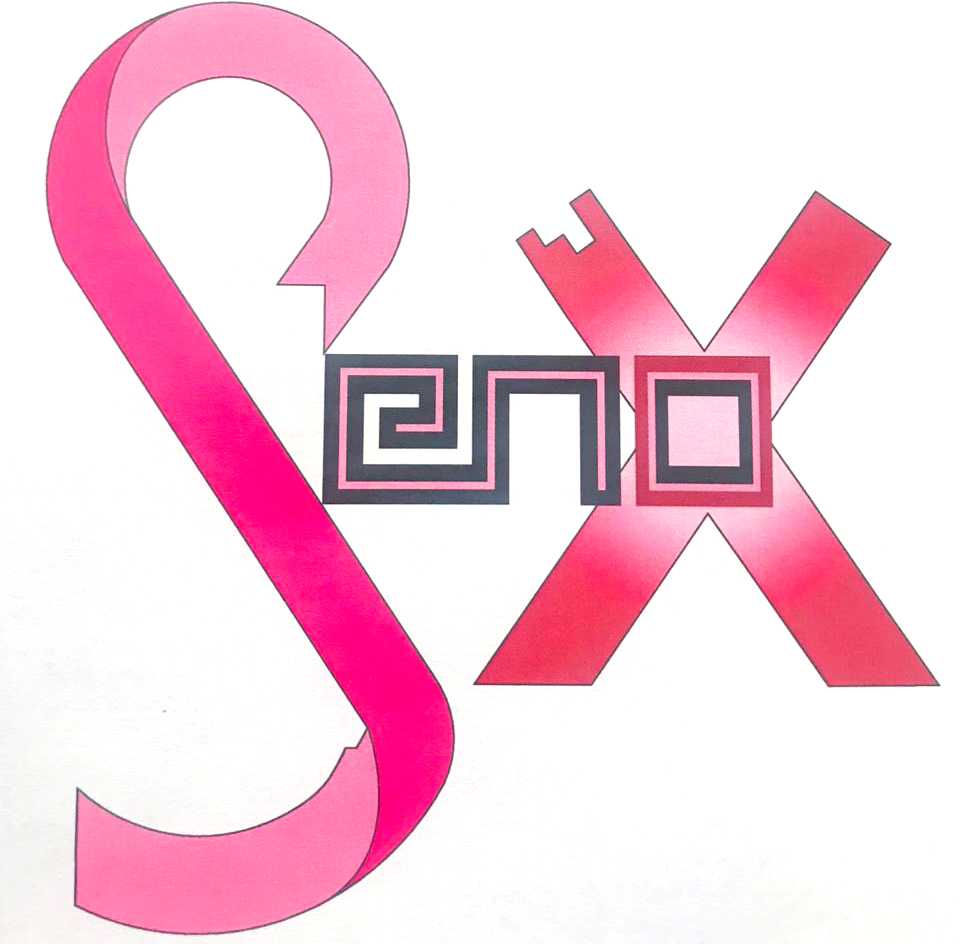
Contacto o citas:
Dr. Genaro Tamayo Pérez
656-611-15-08
656-227-19-85
01-800-606-04-04 Ext. 4800
genarotamayofacs@hotmail.com
Not everything is cancer!
Despite we are almost entering the year 2021, there are many women who don’t know the kinds of diseases that can affect their breasts, which may not necessarily trigger cancer.
To learn about these diseases, Visionarias spoke with Dr. Genaro Tamayo Pérez, specialist in pathology of the mammary glands and director of the SenX Breast Pathology Clinic, who helps us understand the structure of this part of the body, as well the types of conditions that can affect it.
Regarding the breasts, the specialist explains that they have an “extraordinary structure”, which doesn’t prevent them from suffering different types of diseases, which can be divided into congenital, that is, from birth, such as when women are born without the structure or only with a part of it.
There are also diseases that appear during development (such as lack of development, developing a lot or one breast growing more than the other). In addition, there is the possibility of the presence of breast tissue outside the usual place (for humans), as well as benign lesions, which, according to Dr. Tamayo, are more than malignant.
The doctor adds that each type of disease or injury has variables that generate different behaviors in women, which will depend on their health, age, genetics and other details that must be evaluated to determine how much the disease will affect the woman or what treatment should be followed in each of them.
When should we worry?
When the lesion is malignant, early detection it’s important, as this will allow better care and ensure the patient’s well-being.
Malignant lesions are divided into lymphoma, sarcoma, and carcinoma; There are two varieties of the carcinoma, the In-situ and the invasive, which has more than 27 types, including the ductal, which is the most common.
“Nowadays women feel something, or it hurts something, or somebody tells them that maybe there’s something, they automatically associate it with cancer and death, which is totally false. Although some of them may die from the disease, this happens by the (late) stage in which the condition was detected, some characteristics of the injury, and the presence of other comorbidities”, says Dr. Tamayo.
Therefore, early detection of breast lesions is important to prevent advanced cancer from developing.
Not everything on the Internet is true
The specialist points out that searching for conditions on the Internet is confusing for women, since it’s a place where not all the information is true and is frequently contradictory, incorrect or imprecise, and although in some cases it’s correct, the management must always be individualized , because each person is different, from their genetics to their habits, and this can vary the treatment.
How to prevent it?
“The largest group of cancer survivors in the world is breast cancer survivors”, confirms Tamayo, who shares that one of the most constant campaigns on the subject is the self-examination, an action that not many women carry out. It’s not a habit in them.
Given this, the specialist pointed out that the best way to teach the practice of self-exploration is to instill it from girls and emphasizes that little girls learn it almost by playing, so they must know how to do it correctly, that is, with the fingertips in circular shape and with the arm behind the head, because in this way any “ball” will be easy to detect.
“If the habit of self-examination is encouraged and girls are taught that not everything is cancer, this will help them to see self-examination as something normal and they will not be afraid of going to the doctor, with this little lesson we can lower the mortality rate from breast cancer even more ”.
Women over 40 years of age most lose the fear of having a mammography study, which is still the most accepted method of surveillance and early detection.
In conclusion, it can be said that talking about breast cancer is not wrong, but it’s necessary to do it conscientiously and proactively, generating a rational analysis, since the majority of lesions are not cancer and the confidence that even if it’s a cancer is a disease can be overcome. So to take care of ourselves and remember that: Not everything is cancer.

Contact or appointments:
Dr. Genaro Tamayo Pérez
656-611-15-08
656-227-19-85
01-800-606-04-04 Ext. 4800
genarotamayofacs@hotmail.com
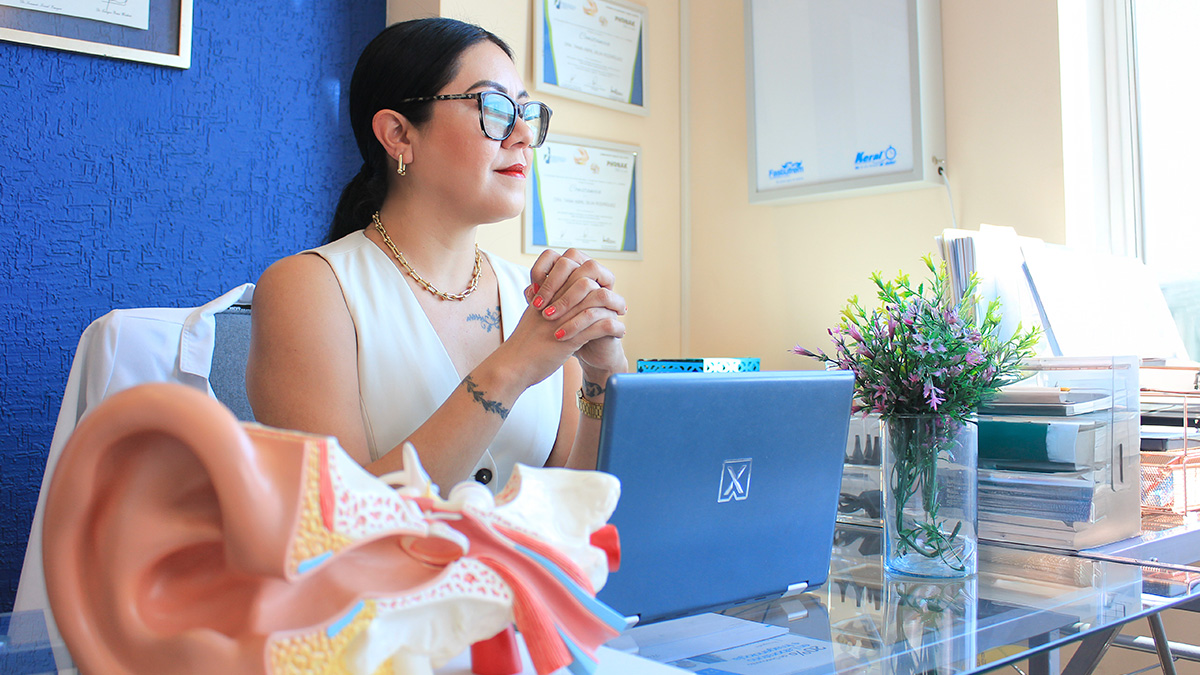
Además de la audiología, su especialidad, la doctora Abril Silva Rodríguez nos habla sobre una visionaria que abrió la puerta para las mujeres en el sector salud mexicano
Especialista en audiología, otoneurología y foniatría, la doctora Abril Silva Rodríguez se dedica al “diagnóstico, manejo y tratamiento de enfermedades que tengan que ver con el oído, desde la audición hasta el equilibrio y también a la valoración de problemas del habla, voz y lenguaje en niños y adultos”, nos explica.
Es egresada de la Universidad Anáhuac México Norte y especialista en audiología, otoneurología y foniatría por la Universidad Nacional Autónoma de México, con una certificación vigente del consejo mexicano de su especialidad. Además, integrante de la Asociación Mexicana de Comunicación, Audiología, Otoneurología y Foniatría A.C., así como del Colegio de Audiología en el estado de Chihuahua y de la Federación Mexicana de Audiología, Otoneurología y Foniatría.
Pero hablar de la experiencia y logros de la doctora Silva no sería posible sin la existencia de otras mujeres que como ella lucharon por hacerse de un lugar dentro del campo de la medicina, siendo de las más importantes Matilde Montoya Lafragua, quien el 24 de agosto de 1887 hizo historia al convertirse en la primera médica de México, título que produjo reacciones encontradas entre la sociedad de la época.
Su destacada carrera médica y su incesable lucha por la igualdad de los derechos de la mujer dejó un legado imborrable en la historia de nuestro país y es justamente en esta parte de la historia, dice Abril Silva, “donde debemos detenernos a pensar ¿los problemas de las pioneras (en cualquier ámbito) radicaron en las normas académicas, las costumbres sociales, prácticas familiares, matrimonios o el ejercicio de la maternidad por mencionar algunos?”
Biografía
Médico especialista en Audiología, Otoneurología y Foniatría
AudioCare Norte Mx, en StarMédica
(Paseo de la Victoria No.4370)
WhatsApp: 656 658.3175
Teléfono: 656 173.9813
Perfil:
En este espacio me permitiré mencionarles ¿por qué es importante cuidar nuestra salud auditiva?
La respuesta es breve, pero aplica para todas las edades. Los trastornos auditivos son un problema de salud, debido a los efectos negativos para el desarrollo personal, familiar y social de las personas, causando problemas en el desarrollo del lenguaje, baja interacción social e incluso deserción escolar en los niños y en los adultos, baja autoestima, irritabilidad, ansiedad e incluso depresión.
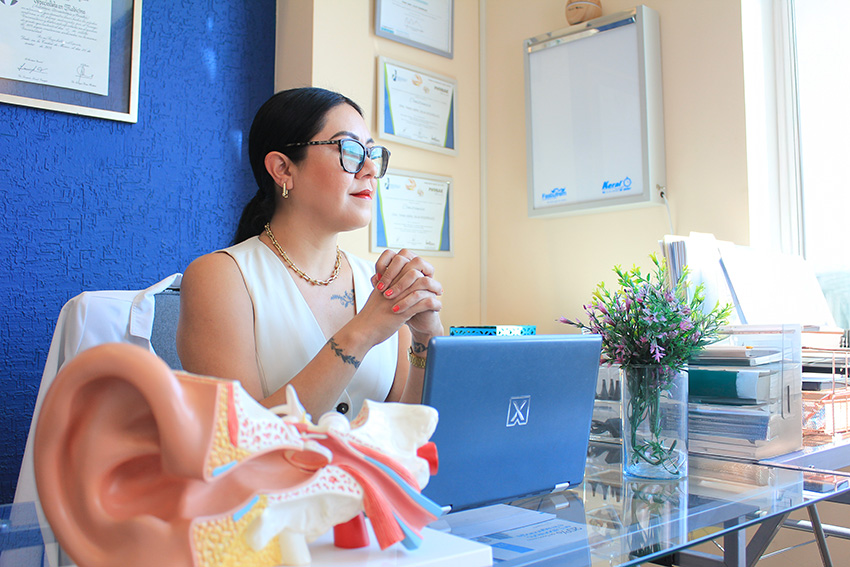
The ‘feminization’ of medicine
In addition to audiology, her specialty, Dr. Abril Silva Rodríguez tells us about a visionary who opened the door for women in the Mexican health sector
Specialist in audiology, otoneurologic, and speech therapy, Dr. Abril Silva Rodríguez is dedicated to the “diagnosis, management and treatment of diseases that have to do with the ear, from hearing to balance and to the assessment of speech, voice and language problems in children and adults,” she explains.
She graduated from the Universidad Anáhuac México Norte and is a specialist in audiology,
otoneurology and speech therapy from the Universidad Nacional Autónoma de México, with a current certification from the Mexican council of her specialty. In addition, she is a member of the Mexican Association of Communication, Audiology, Otoneurology and Speech Therapy A.C., as well as the College of Audiology in the state of Chihuahua and the Mexican Federation of Audiology, Otoneurology and Speech Therapy.
But talking about the experience and achievements of Dr. Silva would not be possible without the existence of other women who, like her, fought to make a place for themselves in the field of medicine,
the most important of whom was Matilde Montoya Lafragua, who on August 24, 1887, made history by becoming the first female doctor in Mexico, a title that produced mixed reactions among society at the time.
Her outstanding medical career and her incessant fight for equal rights for women left an indelible legacy in the history of our country and it is precisely in this part of history, says Abril Silva, “where we must stop to think, were the problems of the pioneers (in any field) rooted in academic norms, social customs, family practices, marriages or the exercise of motherhood, to mention a few?”
“Each one has her own answer and today we have the opportunity to break the ‘glass ceiling’.
Contemporary Mexican medicine is becoming ‘feminized’. The proportion of female doctors has been gradually increasing when did our predecessors imagine that
this could one day be a reality?” asks someone who also makes a difference from
her trench, audiology.
Biography
Dra. Abril Silva Rodríguez
Specialist in Audiology, Otoneurology and Phoniatrics
AudioCare Norte Mx, at StarMédica (Paseo de la Victoria No. 4370)
WhatsApp: 656-658-3175
Phone: 656-173.9813
Profile
In this space I will allow myself to mention why it is important to take care of our hearing health?
The answer is brief, but it applies to all ages. Hearing disorders are a health problem, due to the negative effects on the personal, family and social development of people, causing problems in language development, low social interaction and even school dropout in children and adults, low self-esteem, irritability, anxiety and even depression.
Don’t forget that “today is a good day to listen”
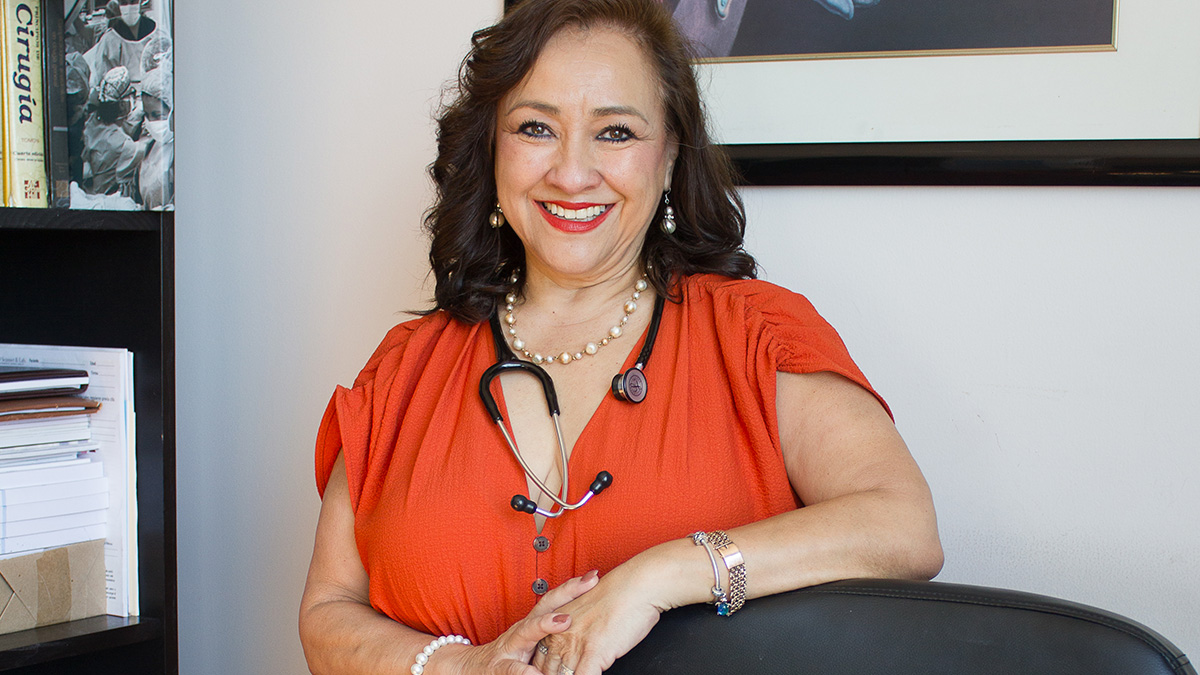
La primera mujer directora de un hospital de zona del IMSS en el estado platica por qué es tan importante un pediatra en el desarrollo de los menores
En nuestra edición de salud, la importancia de la atención médica temprana recae en la médico pediatra Elvia León Olivares, quien nos platica la diferencia entre su especialidad y un médico general, y por qué es tan importante en el desarrollo de los menores, sobre todo en los primeros meses de vida.
“Es en el período desde el nacimiento hasta los seis meses en el que es aún más importante llevar un seguimiento cada mes con visitas al pediatra, ya que se pueden detectar problemas que de no diagnosticarse a tiempo pueden afectar toda la vida del pequeño paciente”, dice.
“Los pediatras están capacitados específicamente para comprender las particularidades de las enfermedades del crecimiento, y las necesidades físicas y emocionales de los niños. Los cuerpos de los niños no son simplemente versiones en miniatura de los adultos, su sistema inmunológico, metabolismo y procesos de desarrollo son únicos, por lo que requieren una evaluación más detallada y adaptada”, mencionó.
Además, los pediatras están familiarizados con las enfermedades comunes en la infancia y tienen un mejor entendimiento de cómo tratar afecciones que pueden manifestarse de manera distinta en los niños en comparación con los adultos.
También están más capacitados para identificar problemas de desarrollo y brindar orientación a los padres sobre temas como la nutrición, el sueño y las vacunas, afirmó la pediatra.
Cuándo debe ocurrir
La atención con el pediatra es recomendable hasta los 15 años de edad, aproximadamente, sin embargo, se puede llevar el seguimiento hasta los 18 años.
Biografía
Dra. Elvia León Olivares
Médico Pediatra
Consulta particular en StarMédica
Perfil
“Desde niña yo supe que quería ser médico y siempre tuve una gran curiosidad científica. Tuve la oportunidad de aprender y desarrollarme al lado de compañeros médicos con grandes capacidades de los que siempre he recibido grandes enseñanzas. Además, me he interesado desde siempre por ayudar a desarrollar los talentos y las habilidades de los más jóvenes”.
“Uno de mis más grandes logros y orgullos ha sido egresar del Hospital Infantil de México ‘Federico Gómez’, uno de los mejores hospitales de América Latina”.
“En cuánto a mi vida institucional fui subdirectora Médica durante 11 años en la clínica del IMSS HGZ 6 de esta ciudad y posteriormente fui nombrada directora médica de esa noble institución, logrando ser la primera mujer directora a nivel estatal de un hospital de zona”.
“Actualmente me encuentro jubilada del sector de salud y estoy concentrada en mis pequeños y preciosos pacientes en mi consultorio particular en StarMédica en Ciudad Juárez”.
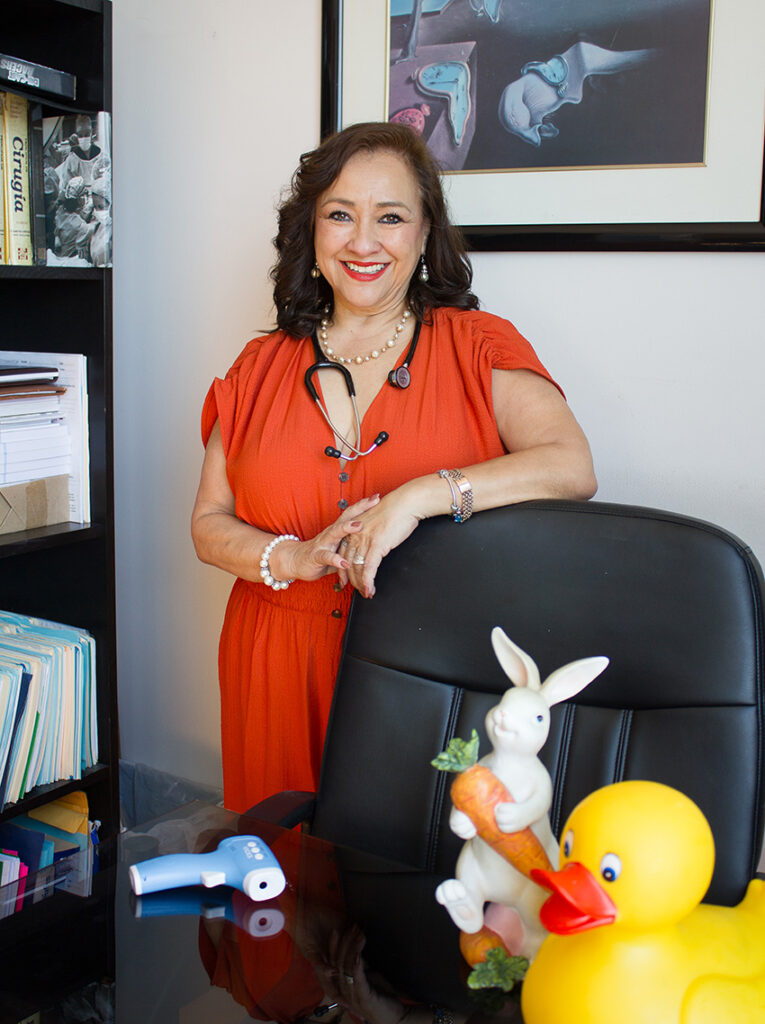
Early medical attention
The first female director of an IMSS regional hospital in the state talks about why a pediatrician is so important in the development of children.
In our health edition, the importance of early medical care falls on the pediatrician Elvia León Olivares, who tells us the difference between her specialty and a general physician, and why it is so important in the development of children, especially in the first months of life.
“It is in the period from birth to six months that it is even more important to carry out monthly follow-up visits to the pediatrician, since problems can be detected that, if not diagnosed in time, can affect the entire life of the little patient,” she says.
“Pediatricians are specifically trained to understand the particularities of growth disorders and the physical and emotional needs of children. Children’s bodies are not simply miniature versions of adults; their immune systems, metabolism and developmental processes are unique, so they require a more detailed and tailored assessment,” she said.
Pediatricians are also familiar with common childhood illnesses and have a better understanding of how to treat conditions that may manifest differently in children compared to adults. They are also better able to identify developmental problems and provide guidance to parents on issues such as nutrition, sleep and vaccinations, the pediatrician said.
When should it occur?
Attention from the pediatrician is recommended until approximately 15 years of age,
however, follow-up can be carried out until 18 years of age.
Biography
Dr. Elvia León Olivares
Pediatrician
Private consultation at StarMédica
Profile
“Since I was a child, I knew I wanted to be a doctor, and I always had a great scientific curiosity.
I had the opportunity to learn and develop alongside fellow doctors with great abilities from whom I have always received great lessons.
In addition, I have always been interested in helping develop the talents and skills of young people.”
“One of my greatest achievements and prides has been graduating from the Federico Gómez Children’s Hospital of Mexico, one of the best hospitals in Latin America.”
“In terms of my institutional life, I was deputy medical director for 11 years at the IMSS HGZ 6 clinic in this city and was later named medical director of this noble institution, becoming the first woman director at the state level of a zone hospital.”
“I am currently retired from the health sector, and I am focused on my precious little patients in my private practice at StarMédica in Ciudad Juárez.”
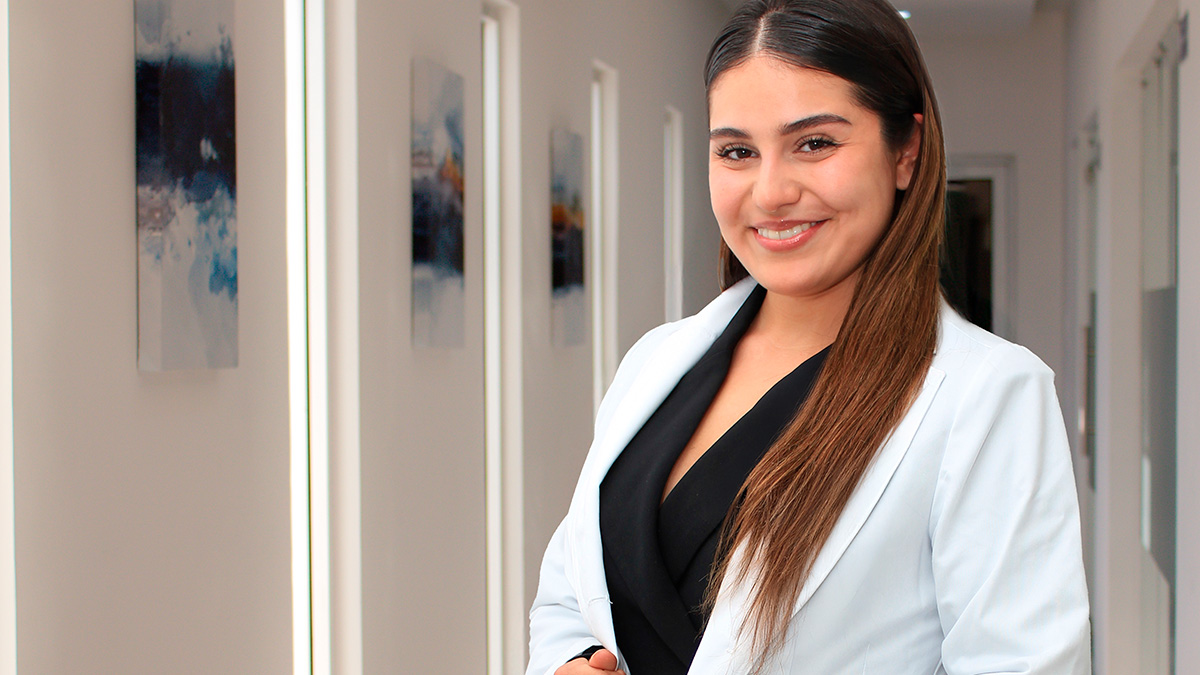
Hablemos de la terapia de reemplazo hormonal
Es importante destacar que la menopausia no es sólo un tema de salud física, sino también emocional y social. Las mujeres en esta etapa pueden experimentar cambios significativos, por lo que es importante que lleven este proceso de la mano de un profesional de la salud.
Como cada 18 de octubre, en México y el mundo se conmemora el Día de la Menopausia, con el objetivo de concientizar sobre la importancia de la evaluación y prevención en la salud femenina, así como del tratamiento adecuado a los síntomas que se presentan, los cuales pueden ser: sofocos, sudoración nocturna, insomnio, cambios en el ritmo de sueño, ansiedad, depresión, irritabilidad, dolor de cabeza, resequedad vaginal y disminución del deseo sexual.
Entre los tratamientos existentes está la terapia hormonal bioidéntica de reemplazo que puede ayudar a mejorar la calidad de vida al eliminar los síntomas de la menopausia.
¿Cuándo usar hormonas bioidenticas?
Durante la perimenopausia y después de la menopausia. Las edades promedio en que se presenta en nuestro país oscilan entre los 45 y 55 años, sin embargo, para la mayoría de las mujeres los síntomas comunes de la menopausia duran de entre 3 a 5 años.
¿Cómo saber si soy candidata al reemplazo hormonal?
Es importante acudir con un médico especialista, quien deberá solicitar los estudios y laboratorios necesarios, posteriormente con los resultados se aconsejará la mejor opción de tratamiento para su caso en específico.
Cada organismo es diferente por lo cual su tratamiento y dosificación también lo son. Acuda con profesionales que individualicen su terapia.
Beneficios:
- Mayor bienestar y calidad de vida
- Regresan la homeostasis al organismo
- Incrementan la libido
- Reducen la fatiga
- Alivian la ansiedad y depresión
- Mejora la función cognitiva
Biografía
Dra. Leslie Tiscareño Lara
Especialista en medicina regenerativa y antienvejecimiento y directora médica en Regenex. Universidad de Durango campus cd Juárez.
Perfil
“La medicina es una carrera que nos permite hacer una diferencia positiva en cada una de las personas que tratamos, de forma individual hay una satisfacción increíble al ver a mis pacientes recuperarse y mejorar”
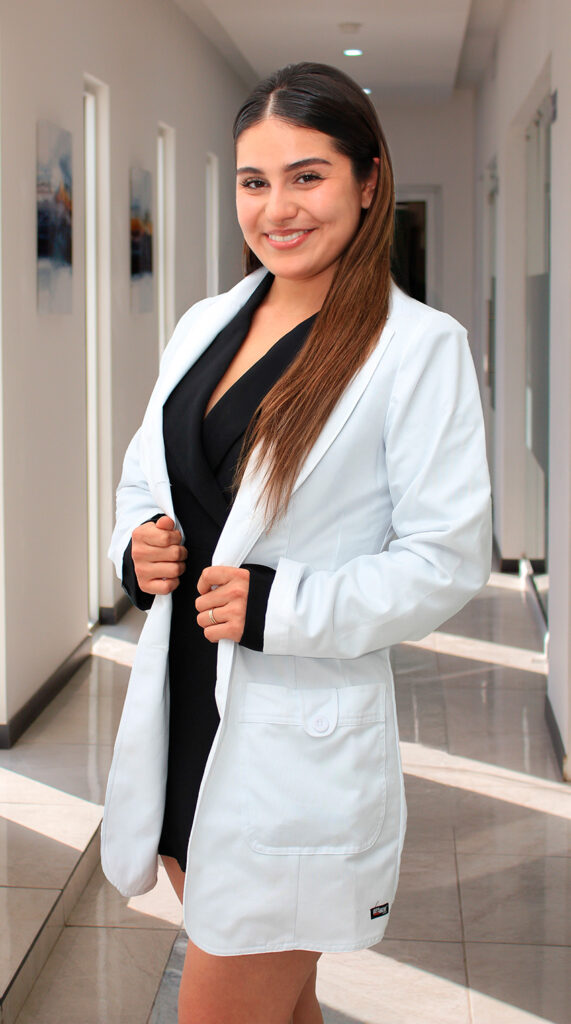
World Menopause Day
Let’s talk about hormone replacement therapy
It is important to note that menopause is not only a physical health issue, but also an emotional and social one. Women at this stage can experience significant changes, so it is important that they go through this process with the help of a health professional.
Every October 18, Mexico and the world commemorate Menopause Day, with the aim of raising awareness about the importance of evaluation and prevention in women’s health, as well as the appropriate treatment for the symptoms that occur, which may include hot flashes, night sweats, insomnia, changes in sleep patterns, anxiety, depression, irritability, headaches, vaginal dryness, and decreased sexual desire.
Among the existing treatments is bioidentical hormone replacement therapy, which can help improve quality of life by eliminating the symptoms of menopause.
When to use bioidentical hormones?
During perimenopause and after menopause. The average age at which it occurs in our country ranges between 45 and 55 years, however, for most women the common symptoms of menopause last between 3 to 5 years.
How do I know if I am a candidate for hormone replacement?
It is important to see a specialist doctor, who will request the necessary studies and laboratory tests. Afterwards, based on the results, he will advise the best treatment option for your specific case.
Each organism is different, so its treatment and dosage are also different. Seek professional advice to individualize your therapy.
Benefits:
- Greater well-being and quality of life
- They restore homeostasis to the body
- They increase libido
- They reduce fatigue
- They relieve anxiety and depression
- They improve cognitive function
Biography
Dr. Leslie Tiscareño Lara
Specialist in regenerative and anti-aging medicine and medical director at Regenex. University of Durango, campus cd Juárez.
Profile
“Medicine is a career that allows us to make a positive difference in each of the people we treat. On an individual level, there is incredible satisfaction in seeing my patients recover and improve.”



